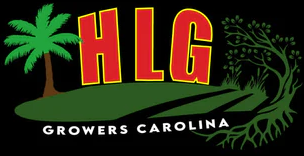Native Plants for Charleston, SC: Why They Matter & What to Plant
October 15, 2025
At HLG Growers, we believe the best landscapes are not only beautiful—but smart. One of the smartest things you can do for your Charleston garden is to incorporate native plants. These are the varieties that have evolved to thrive in our hot, humid summers, occasional flooding, salty air, and coastal breezes. They require less maintenance, attract local wildlife, and create a landscape that truly belongs to the Lowcountry.
🌿 Why Choose Native Plants?
Here are a few compelling reasons:
Drought Tolerance: Once established, native plants generally require less watering.
Pest Resistance: Local insects and diseases are less likely to damage plants that are adapted to the environment.
Pollinator-Friendly: Native plants provide nectar and habitat for bees, butterflies, birds, and more.
Lower Maintenance: Say goodbye to constant fertilizing and pruning.
Storm Resilience: Many native species can handle salt spray and even brief flooding.
🌸 Top Native Plants for Charleston Gardens
Here's a list of some Lowcountry favorites that are perfect for your landscape:
1. Muhly Grass
(Muhlenbergia capillaris)
This ornamental grass puts on a stunning pink-purple show in the fall. It's drought-tolerant, deer-resistant, and thrives in full sun.
Best Use: Borders, mass plantings, or as a soft backdrop around hardscapes.
2. Sweetgrass
(Muhlenbergia sericea)
Yes, that sweetgrass—the one used in traditional Gullah basket weaving. It grows in clumps, does great in coastal soil, and looks fantastic in naturalized areas.
Best Use: Rain gardens, coastal beds, or decorative grasses in dry spots.
3. Yaupon Holly
(Ilex vomitoria)
Despite the name, this small evergreen tree or shrub is a powerhouse in the landscape. Birds love its red berries, and it can be pruned into a privacy hedge or shaped into a tree.
Best Use: Privacy screening, foundation planting, or ornamental tree.
4. Coral Honeysuckle
(Lonicera sempervirens)
This climbing vine blooms red-orange tubular flowers that hummingbirds can’t resist. Unlike its invasive cousin, Japanese honeysuckle, coral honeysuckle is a well-behaved native.
Best Use: Trellises, fences, mailboxes, and pergolas.
5. Seaside Goldenrod
(Solidago sempervirens)
Goldenrod has a bad rap for allergies (wrongly—it’s ragweed that’s the culprit), but this bright yellow bloomer is a bee and butterfly magnet.
Best Use: Pollinator gardens and coastal beds.
6. Carolina Jessamine
(Gelsemium sempervirens)
This twining evergreen vine bursts into golden-yellow blooms in early spring. It’s even South Carolina’s state flower!
Best Use: Arbors, trellises, fences, or naturalized along fences.
7. Wax Myrtle
(Morella cerifera)
A fast-growing shrub or small tree with a lovely fragrance and dense foliage. It’s a favorite for birds and useful for natural privacy screens.
Best Use: Privacy hedges, windbreaks, or wildlife gardens.
🌎 Eco-Friendly Landscaping is Charleston Smart
Whether you’re installing a new garden or upgrading your yard, native plants are a long-term investment in beauty, sustainability, and ecological health. At HLG Growers, we specialize in creating Lowcountry landscapes that reflect the soul of Charleston—weather-resistant, welcoming, and wonderfully alive.
Let us help you design a garden that works with nature, not against it.
📞 Ready to plant native? Contact us today for a personalized landscape design consultation!
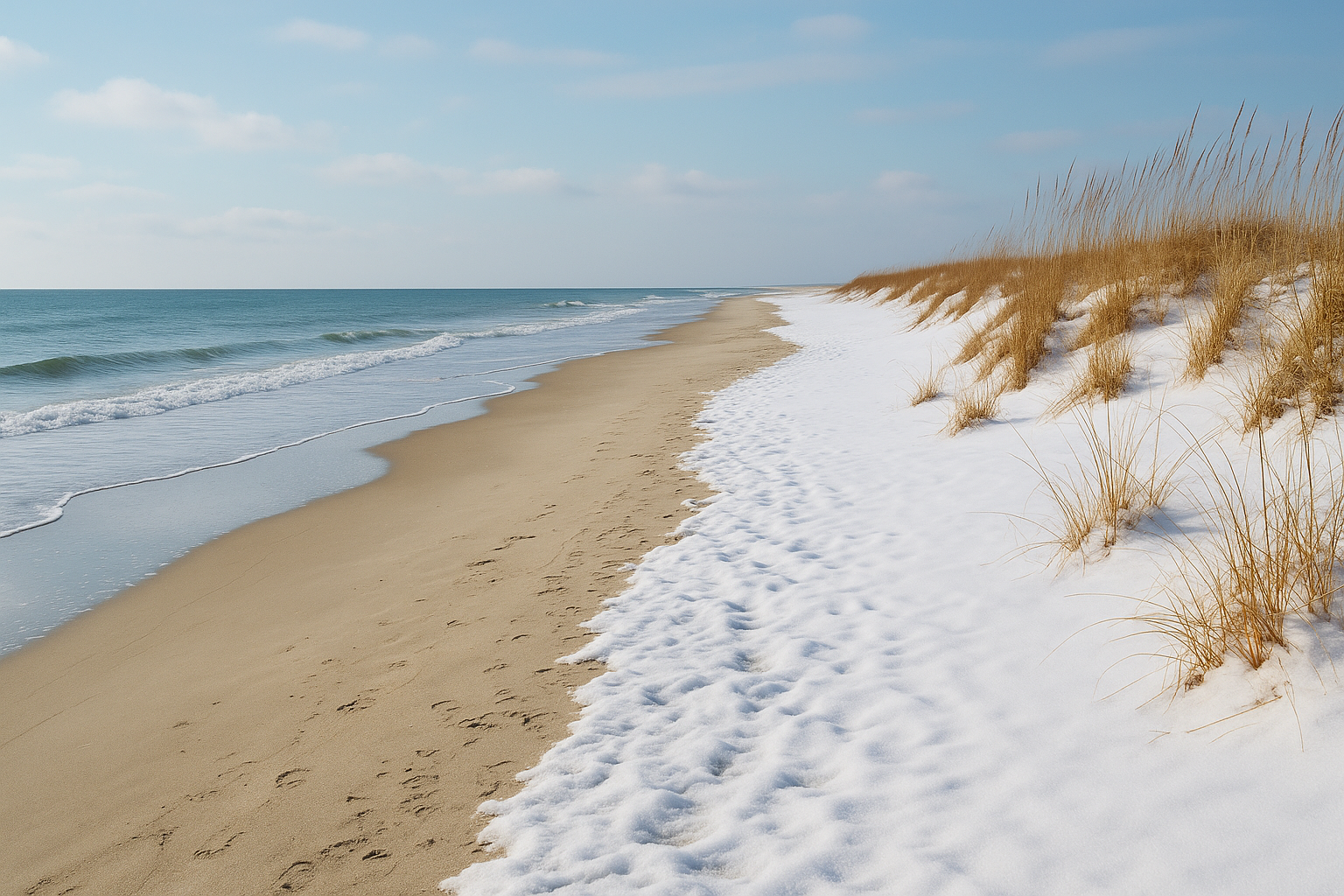
When most people think of winter, they imagine snow, ice, and months of dormancy. But here in the Lowcountry, winter looks a little different—and so should your approach to landscape care. Charleston winters are generally mild, but don’t let the lack of snow fool you. The cooler temps, sporadic frosts, and damp conditions can still impact your plants, soil, and overall curb appeal if you’re not prepared. At HLG Growers, we’re here to help you keep your landscape healthy and attractive all season long. 🥶 1. Watch for Sudden Temperature Drops Charleston’s winter weather can swing from 70° to 29° overnight. These cold snaps can damage even “hardy” plants if they're not protected. What to do: Keep an eye on local forecasts Water your plants before a freeze—moist soil retains more heat Use frost cloths or old sheets to cover sensitive plants overnight (remove during the day) Avoid plastic coverings, which can trap condensation and freeze leaves 🌿 Pro tip: Plants in containers are more vulnerable—move them closer to the house for shelter. 🧤 2. Add a Cozy Blanket of Mulch Mulch isn’t just for looks—it’s your plants’ first line of defense in winter. Benefits of mulching in winter: Keeps soil temperatures more stable Protects roots from frost Prevents moisture loss during dry, windy days Helps suppress early spring weeds Best time to apply: Late fall or early winter, once temps begin to drop consistently. Choose a 2–3 inch layer of pine straw, bark, or shredded hardwood—but keep it off the plant base to prevent rot. ✂️ 3. Know What to Cut (and What Not to) Winter pruning can be helpful—but also risky if done incorrectly. Many Charleston plants benefit from trimming, while others should be left alone until spring. Trim now: Dead or damaged branches (from storms or frost) Ornamental grasses (cut down to 6–8 inches in late winter) Roses, crepe myrtles (in moderation!), and select perennials Wait to trim: Azaleas and camellias (you’ll cut off next spring’s blooms) Tropical or borderline-hardy plants like hibiscus or lantana When in doubt—leave it alone until spring or give us a call for a consult. 💡 4. Light It Up Winter nights arrive early, but your landscape doesn’t have to go dark. Outdoor lighting: Enhances safety along walkways and entrances Creates beautiful nighttime curb appeal Makes cozy backyard spaces usable after sundown Warm-tone LEDs, uplighting on trees, or lighting under benches and pavers can completely transform your space—especially in winter when greenery is minimal. 🌿 5. Winter Plants for Year-Round Curb Appeal Want your yard to still look alive in January? These Lowcountry winter stars can handle the chill and still shine: Camellias – Blooms from fall through late winter Yaupon Holly – Evergreen with red berries Muhly Grass – Adds texture and color even after blooms fade Sweet Box or Dwarf Pittosporum – Evergreen structure for borders and beds Winter Daphne – Small blooms with big fragrance We can help you design beds that don’t go dormant—even if the weather does. 🛠️ Need a Winter Landscape Checkup? Whether you need: A mulch refresh Guidance on protecting sensitive plants Lighting installations Cold-season planting advice HLG Growers is here to keep your outdoor space beautiful and thriving through every Charleston season. 📞 Call now to book your winter maintenance consultation before the next frost sneaks up..
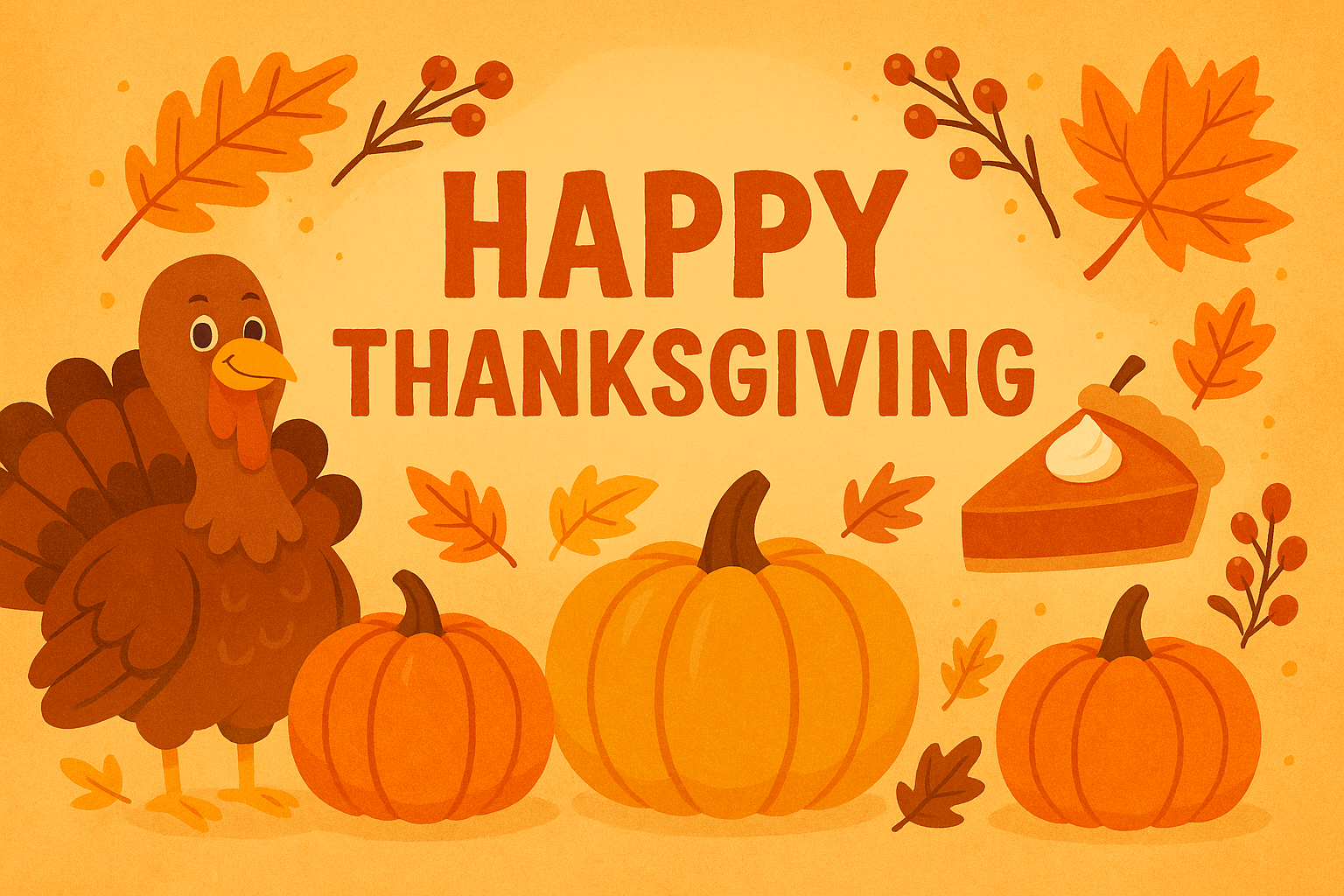
As Thanksgiving approaches, we’re taking a moment to pause—not just from digging, designing, or planting—but to reflect on what this season is really about: Gratitude. At HLG Growers, we are incredibly thankful—for the trust you place in us, the spaces we get to help shape, and the community that makes Charleston feel like home. 🌿 Thank You for Letting Us Into Your Yards (and Your Lives) Every project starts with a conversation. You tell us your hopes for your outdoor space—maybe it’s a new patio for hosting, a fire pit for family nights, or a garden that blooms just like the one you remember from childhood. Then, you let us bring those visions to life. That kind of trust? We don’t take it lightly. We’re grateful to be part of your homes, your stories, and your traditions. Whether we’ve installed a paver walkway, designed a lush new landscape, or helped resolve a tough drainage issue—thank you for choosing us. 👷 Thank You to Our Crew and Partners None of this would be possible without the hands and hearts behind the scenes. To our dedicated team who: -Show up early -Work through Charleston’s summer heat and fall rain -Lay each stone, plant each flower, and treat each yard like it’s their own We see you—and we’re thankful for everything you do. We also extend thanks to our vendors, nursery partners, stone suppliers, and subcontractors. Your consistency and craftsmanship make it all possible. 🤝 Thank You for Supporting Local When you choose HLG Growers, you’re supporting: A local, family-owned business Jobs right here in the Lowcountry Long-term relationships over one-time transactions Quality work that puts heart behind every design 💬 From Our Family to Yours… Whether you're hosting a full Thanksgiving feast in your outdoor kitchen, roasting marshmallows by the fire pit, or just enjoying a quiet moment in your yard—we hope your space brings you peace and connection this season. We’re grateful beyond words for your support, your trust, and your belief in what we do. 🍁 From all of us at HLG Growers—thank you. We wish you and your family a warm, safe, and joyful Thanksgiving.
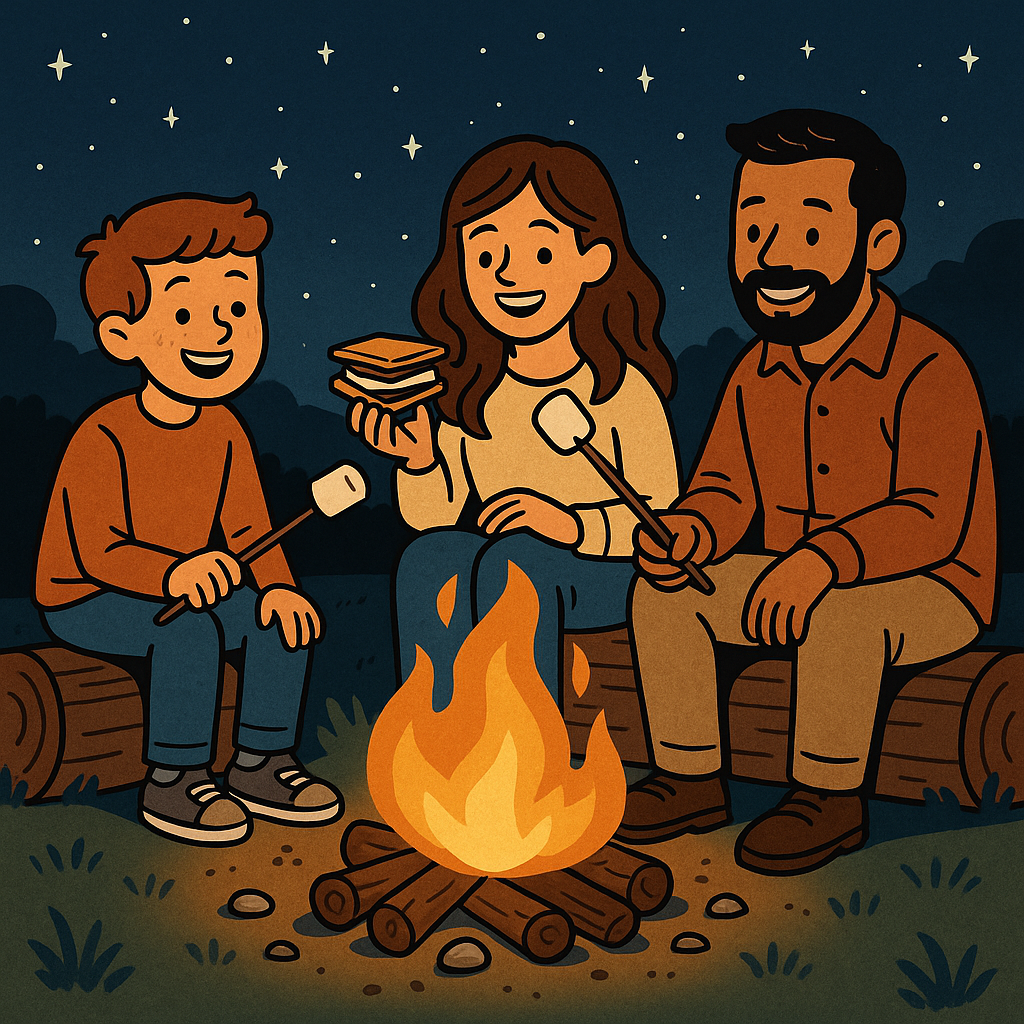
Thanksgiving is about more than turkey and table settings. It’s about gathering—sharing warmth, laughter, and gratitude with the people we love. And while dining rooms might get all the attention, some of the most memorable moments happen just beyond the back door. At HLG Growers, we believe your outdoor space should be more than pretty—it should be personal, purposeful, and inviting. Whether it's a firepit surrounded by cozy chairs, a pergola dressed in string lights, or a paver patio that’s hosted more family dinners than your dining room, your landscape has the power to bring people together. This season, we’re reflecting on the many ways outdoor spaces become part of the celebration. 🔥 Fireside Chats & S'mores Under the Stars There’s something timeless about sitting around a fire. The way it draws people in. The way kids tell silly stories, adults share real ones, and everyone ends up with marshmallow on their hands. Firepits and fireplaces are more than just features—they’re conversation starters, memory makers, and natural gathering points as temperatures drop. "Our backyard fire pit became our go-to spot for family game night and Friendsgiving desserts." – HLG Client, Mt. Pleasant 🪵 Paver Patios Built for People (Not Just Plants) A well-designed patio doesn’t just anchor your landscape—it anchors your gatherings. From fall brunches to evening wine by the fire, your hardscape sets the stage for connection. Whether you prefer bluestone, Charleston brick, or classic pavers, we create outdoor rooms that feel just as welcoming as your interiors—but with a better view. Bonus: Add seasonal containers, cozy throws, and outdoor lighting for that warm fall glow. 🌿 Outdoor Kitchens = Everyone’s Favorite Gathering Place Thanksgiving might be about food, but hosting doesn’t mean being stuck inside. Outdoor kitchens and grilling stations let you join the conversation while serving up your best dishes. And if you're not cooking the turkey outside, your guests can still enjoy: -A bar cart or beverage station -Appetizers fresh from the smoker -Cozy barstools under a pergola 🍷 Pro tip: A simple sideboard + string lights can turn any patio into a Pinterest-worthy holiday spot. 🪴 Landscapes That Invite People to Linger Charleston’s fall weather is too good to waste indoors. A landscape that’s thoughtfully designed—soft lighting, paths that flow, plants that bloom in cooler temps—makes guests want to explore and unwind. Fall favorites we love using: *Ornamental grasses like pink muhly for seasonal flair * Camellias and sasanquas for blooms through Thanksgiving * Evergreens for structure and privacy around seating areas 💬 Final Thoughts: Be Grateful for the Ground You Gather On This Thanksgiving, we’re thankful for: *Clients who let us shape their spaces! * Families who make memories in the landscapes we build! *The beauty of the Lowcountry and all it grows! If your outdoor space isn’t bringing people together the way you wish it would—let’s change that. Whether you're dreaming of a backyard gathering spot or a full outdoor kitchen, HLG Growers is here to design a space that welcomes everyone home. 📞 Let’s talk about your dream outdoor space—before next Thanksgiving comes around.
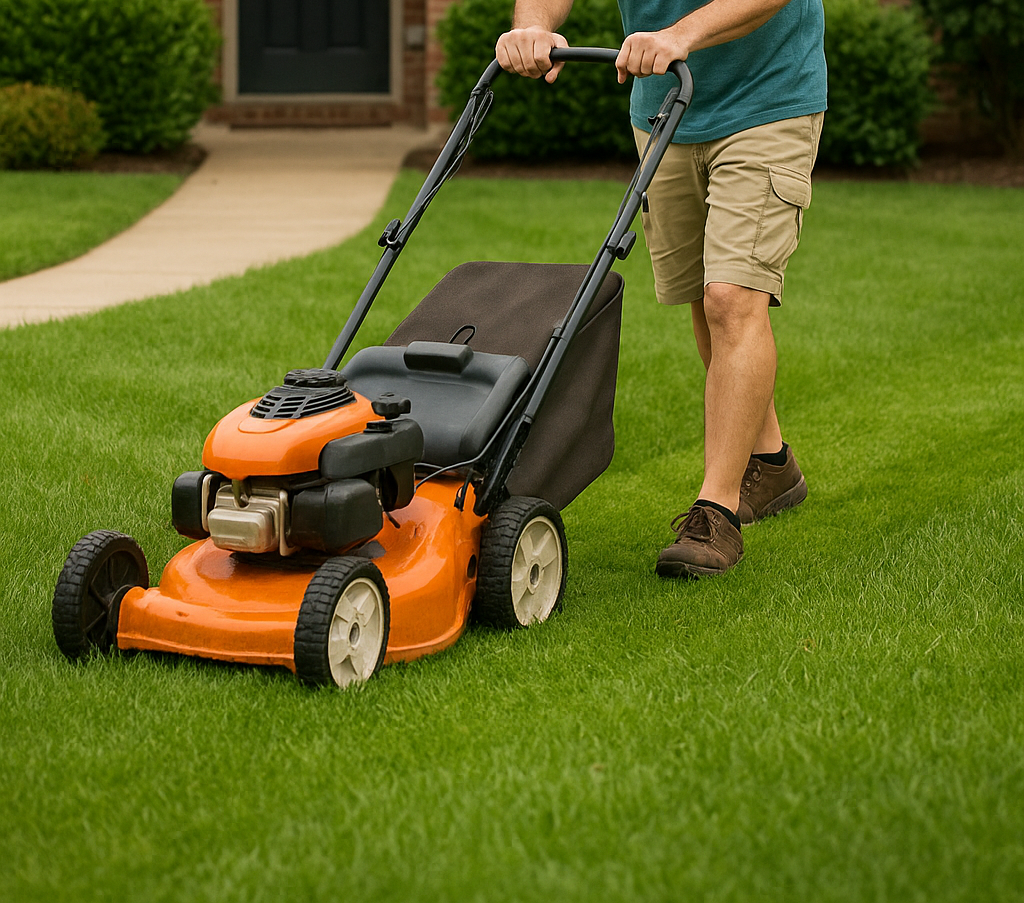
In Charleston, the cooler months bring relief from the intense heat of summer—but that doesn’t mean it’s time to forget about your lawn. In fact, fall is the most important season for prepping your turf for long-term health and a strong spring comeback. At HLG Growers, we know that successful landscapes aren’t just about what you plant—they’re also about how you maintain your lawn throughout the year, especially during seasonal transitions. Here’s your fall lawn care game plan, designed specifically for Charleston’s warm-season grasses like centipede, zoysia, and St. Augustine. 🍂 1. Keep Mowing (Just a Bit Lower) As temps drop, your grass growth slows—but don’t stash the mower yet. ✅ Continue mowing until growth fully stops (usually late fall) ✅ Drop your blade height slightly for the final mow—this reduces disease and thatch over winter ✅ Never scalp or cut more than ⅓ of the blade length at once Lowering the grass slightly helps it stay healthy during dormancy and allows for better air circulation. 🧪 2. Test and Adjust Your Soil Fall is a smart time to check your soil’s pH and nutrient levels. Charleston’s sandy soils can become acidic and may need lime to balance. ✅ Test pH with an easy DIY kit or ask HLG Growers for a full soil analysis ✅ Add amendments now to give them time to take effect before spring Ideal pH for most Southern turf is between 5.5 and 6.5, depending on grass type. 🌱 3. Don’t Fertilize Warm-Season Lawns in Late Fall Many homeowners make the mistake of fall fertilizing—but for warm-season grasses like zoysia, centipede, and St. Augustine, you’ll do more harm than good. Fertilizing now may: -Trigger growth when the grass should be going dormant - Make it more vulnerable to cold damage or disease - Waste your money (the nutrients won't be absorbed efficiently) ✅ Instead, fertilize in late spring and early summer when grass is actively growing. 💧 4. Water Wisely As fall rains increase, your irrigation schedule should change. ✅ Reduce watering frequency as temperatures cool ✅ Watch for overwatering or signs of fungal growth (like brown patches) ✅ Check irrigation heads for blockages from leaves or debris Rain + cooler temps = less need for irrigation. Overwatering in fall is a top cause of disease. 🍃 5. Mulch Your Leaves—Don’t Bag Them Instead of raking and bagging, mulch your leaves into the lawn using a mulching mower. Benefits: -Adds organic matter to your soil -Feeds microbes and earthworms - Helps your lawn hold moisture during dry fall spells - Avoid thick layers of wet leaves—they can suffocate your turf if not shredded properly. 🪴 6. Overseed Bare Spots (If Needed) If you have shaded areas or patchy turf, fall is a great time to overseed with a cool-season grass like rye or fescue. While this won't last into summer, it keeps your lawn green through winter and prevents erosion. ✅ Use this trick for high-visibility or high-traffic areas where dormant grass may look worn out. Want year-round color? Ask us about custom overseeding strategies for Charleston’s climate. 🧹 7. Edge, Clean Up, and Prep for Dormancy The finishing touches matter: -Edge along walkways, beds, and patios - Remove built-up thatch if it’s over ½ inch thick - Treat fire ant mounds before winter - Clean tools and sharpen mower blades before storing 🌿 Final Thoughts In Charleston’s climate, fall lawn care is all about smart timing, soil health, and gentle prep. What you do now determines how your lawn will look come springtime. Whether you need a soil test, drainage advice, or a full seasonal refresh, HLG Growers is here to help your outdoor space thrive—from the grass up. 📞 Ready to prep your lawn for a lush spring? Let’s schedule your fall lawn care walkthrough today.
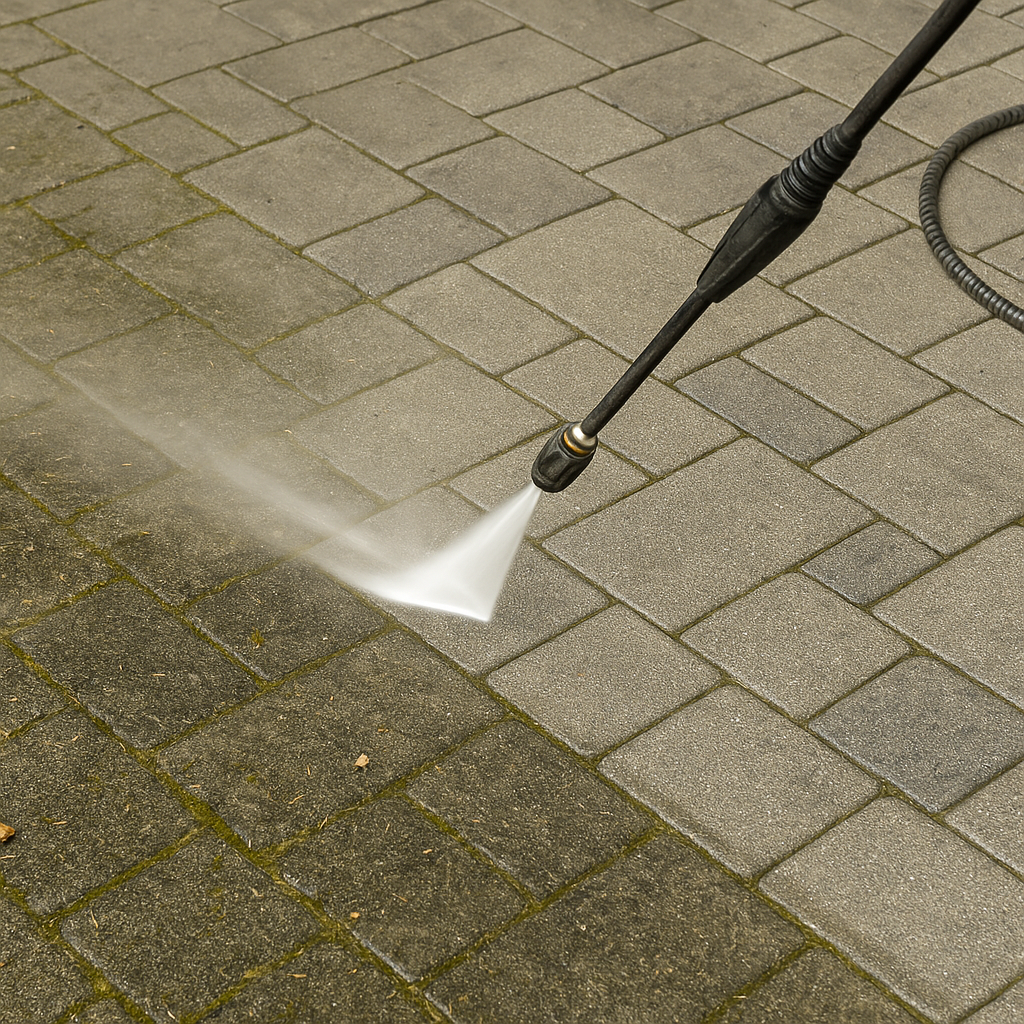
As the weather starts to cool and the leaves begin to fall, it’s the perfect time to shift your focus from summer enjoyment to fall hardscape maintenance. Whether you have a paver patio, bluestone walkway, fire pit area, or retaining walls, these elements require seasonal care to keep them beautiful, safe, and long-lasting. At HLG Growers, we build custom outdoor spaces that elevate your property—and we want to help you protect them. Here are our top fall maintenance tips to keep your hardscape looking great all year long. 🍂 1. Give Your Pavers a Proper Cleaning Leaves, dirt, and debris build up quickly in the fall. If left unchecked, they can stain your pavers and create slippery surfaces. What to do: -Blow or sweep regularly to prevent organic buildup - Power wash stubborn stains (especially under trees) -Use a mild, paver-safe cleaner to remove moss or algae if needed Charleston Tip: Coastal humidity and shade can encourage algae and mildew—address it now before cooler, wetter months arrive. 💨 2. Check for Settling or Uneven Surfaces Heavy summer use, erosion, or drainage issues can cause pavers to settle or shift. Signs to look for: -Tripping hazards or wobbly stones - Pooling water on patios or walkways - Gaps between pavers If you notice any of these issues, fall is a great time to relevel and repair before winter rains make things worse. Need help? HLG Growers can lift and re-set pavers to restore a smooth, safe surface. 🧱 3. Seal Natural Stone or Pavers (If Needed) Sealing isn’t necessary for all hardscapes, but if you have porous natural stone or older pavers, a fall sealant can: -Prevent moisture absorption and cracking during temperature swings - Protect against stains from falling leaves, sap, or rust - Enhance the color and longevity of your surface Ask us about low-gloss or natural-look sealants that don’t make your pavers slippery or overly shiny. 💧 4. Evaluate Drainage Around Hardscape Areas Fall rain + clogged drains or compacted soil = standing water. That leads to erosion, weed growth, and potential foundation issues. Check: -Gutters and downspouts near patios or paths - French drains or channel drains for debris - Pooling near fire pits, retaining walls, or outdoor kitchens HLG Growers offers drainage solutions to fix problem areas before they escalate in winter. 🔥 5. Inspect Fire Features & Outdoor Kitchens Fall is the perfect time to enjoy your fire pit or fireplace—but don’t forget to give it a safety check. Fire Feature Tips: -Clear out ash and debris - Check gas lines and ignition systems - Look for cracks in fire bricks or stone surrounds Outdoor Kitchen Tips: -Clean surfaces and seal stone countertops - Disconnect or winterize water lines if needed -Store or cover grills and appliances you won’t use over winter 🌿 6. Edge, Refresh, and Mulch Around Hardscapes Keep your patio or pathway looking polished with a little seasonal clean-up: -Redefine edges around pavers or borders - Pull weeds or grass growing in joints - Add a fresh layer of mulch around landscape beds and sitting areas This simple touch helps frame your hardscape and control weeds during fall and winter. 💬 Final Thoughts Your outdoor space is an investment—fall maintenance protects it. With just a few smart steps, you’ll preserve the beauty and function of your patio, walkways, and walls for years to come. At HLG Growers, we offer more than just design and installation—we’re here for the long haul with seasonal care, touch-ups, and guidance. 📞 Need help preparing your hardscape for fall and winter? Let us take a look and recommend the best solutions.
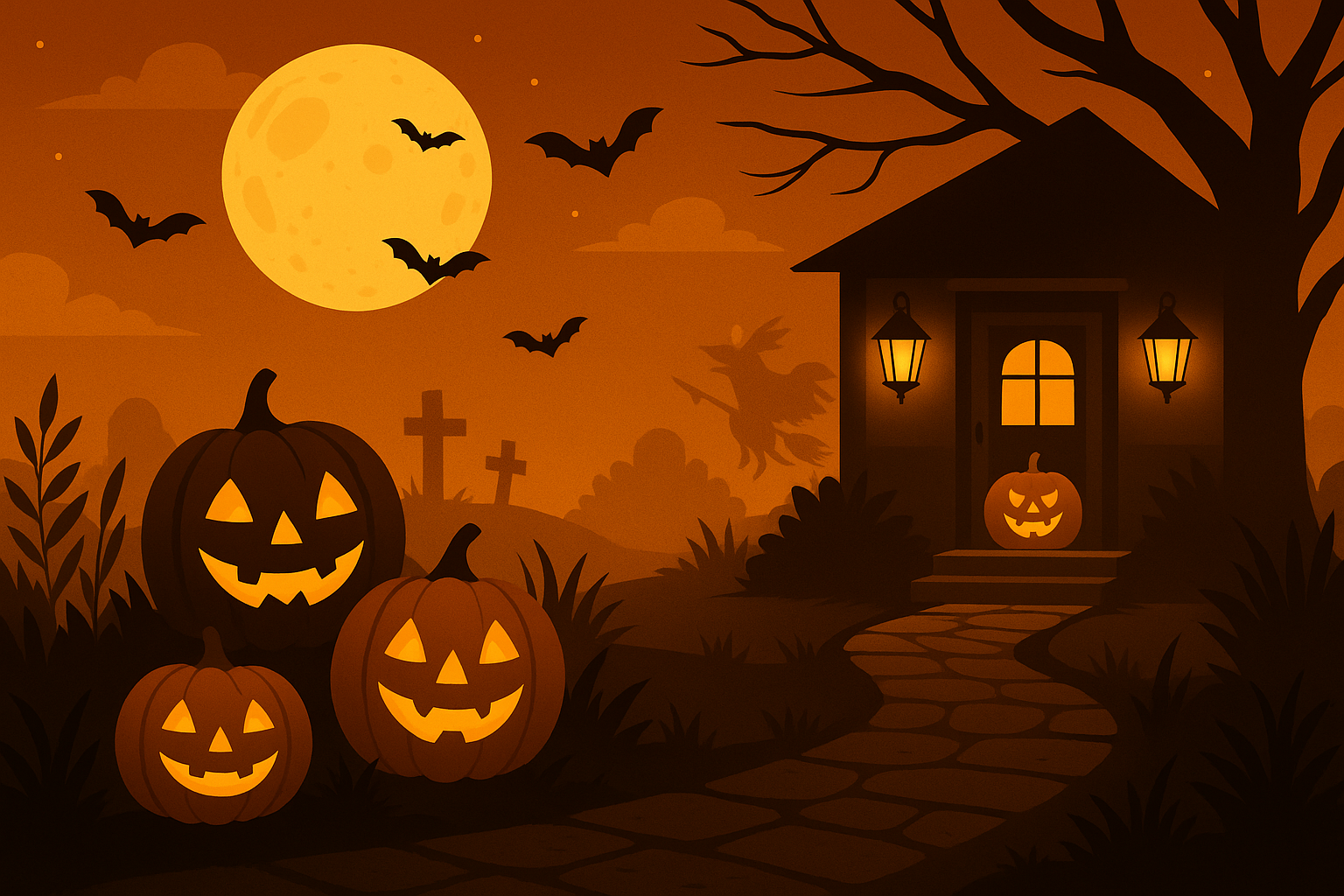
Not all Halloween décor has to be inflatable ghosts and flashing lights. Sometimes, the most hauntingly beautiful atmosphere comes from your landscape itself. Whether you’re decorating for fall or just love a moodier, more dramatic garden, certain plants can add an elegant, mysterious vibe—without ever touching a plastic skeleton. At HLG Growers, we design landscapes that reflect your personality—and sometimes that includes a little seasonal flair. If you're looking for unique fall foliage or plants that bring a spooky-but-sophisticated feel to your Charleston yard, this list is for you. 🖤 1. Black Mondo Grass (Ophiopogon planiscapus ‘Nigrescens’) Why it’s striking: Deep purple-black blades look bold against lighter stone or mulch. It's a small plant with a big impact. Why it works in Charleston: Low-maintenance, heat-tolerant, and great for edging walkways or flower beds. Pair it with lighter green or silver plants for a moody contrast. 🌫️ 2. Ghost Fern (Athyrium ‘Ghost’) Why it’s striking: Silver, iridescent fronds shimmer in shade, adding an ethereal glow to shadowy corners. Why it works here: Loves our humidity and thrives in Lowcountry shade. It’s ideal under trees, near shaded patios, or beside water features. 🍁 3. Bloodgood Japanese Maple (Acer palmatum ‘Bloodgood’) Why it’s striking: Deep red to purple foliage turns even darker in fall, offering rich color and texture. Why it works here: It tolerates Charleston’s heat and looks stunning near traditional brick or bluestone. A beautiful focal point year-round—and especially stunning in autumn. 🦇 4. Bat Flower (Tacca chantrieri) Why it’s striking: This tropical-looking plant produces eerie, bat-shaped blooms in deep purple-black. Why it works here: With the right shady, protected location, it thrives in Charleston’s humidity. Use it in a large container to highlight its unique flair. 🌼 5. Witch Hazel (Hamamelis virginiana) Why it’s striking: Despite the name, this native plant adds seasonal charm with yellow spidery blooms in fall. Why it works here: It’s a hardy native that blooms just as other plants fade. Bonus: It supports pollinators when most other blooms have finished. 🍂 Honorable Mentions: Toad Lily – Unique purple-spotted blooms that love shade Purple Heart – Rich, velvety ground cover Love Lies Bleeding (Amaranth) – Long, trailing red blooms for dramatic flair 🍁 Final Thoughts You don’t need skeletons and spider webs to set the scene—Charleston’s gardens are full of plants that naturally evoke the mystery and beauty of the season. Whether you’re planting for fall or creating a dramatic year-round look, these selections offer just the right touch of spooky sophistication. 📞 Want help designing a landscape with character? Let HLG Growers help you create a space that turns heads and thrives in every season.
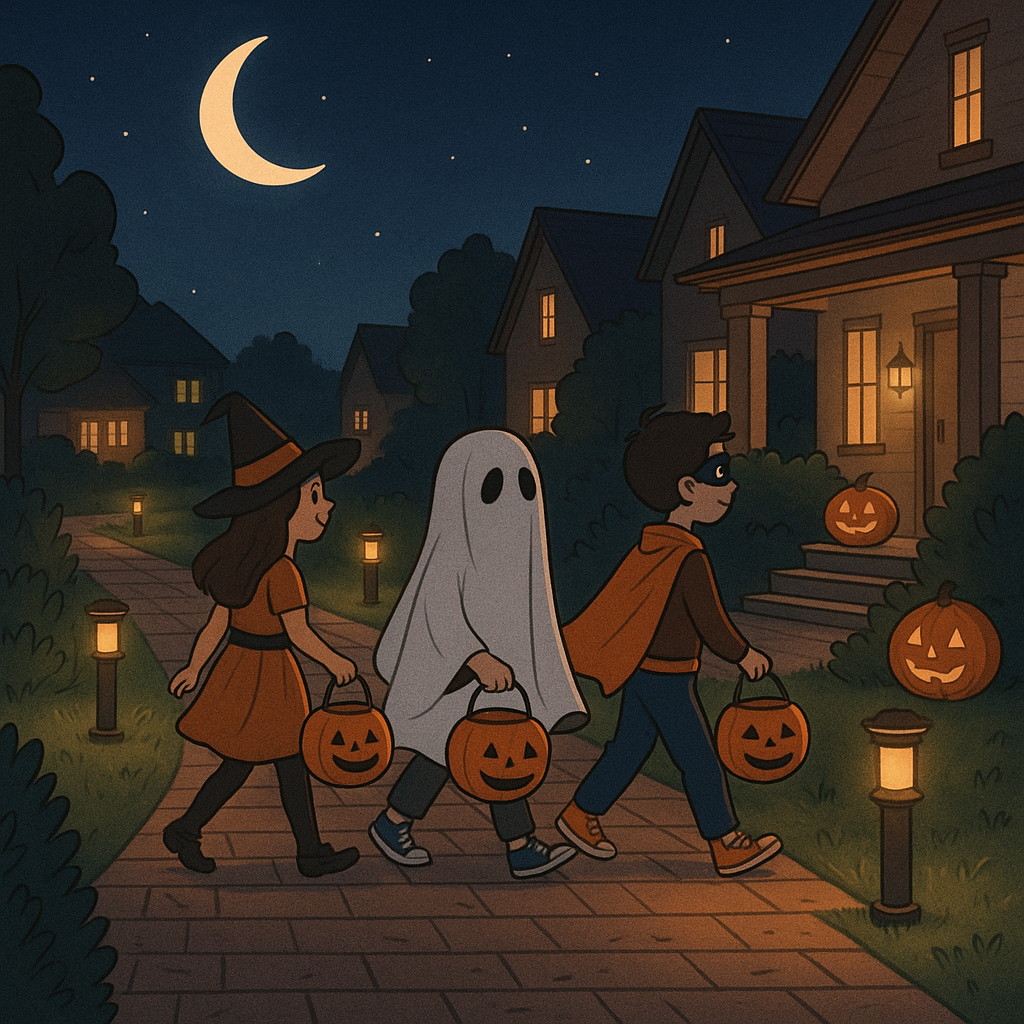
Halloween in Charleston is full of charm—historic porches, Spanish moss, glowing jack-o’-lanterns, and happy trick-or-treaters winding through the neighborhood. But before the big night arrives, it’s worth asking: Is your walkway safe, well-lit, and ready for foot traffic? At HLG Growers, we don’t just build beautiful outdoor spaces—we design with purpose and safety in mind. Whether you’re expecting a handful of trick-or-treaters or a whole parade of candy-seeking kiddos, here’s how to make your landscape and hardscape Halloween-ready. 🧱 1. Check for Trip Hazards on Walkways & Pavers Cracked pavers, uneven stones, or lifted bricks may not seem like a big deal during the day—but at night, especially with excited kids in costume, they can become dangerous. ✔️ Do a quick walkthrough and look for: Uneven pavers or shifting slabs Loose gravel or debris Roots lifting edges of walkways Edging that creates a tripping lip 💡 Pro Tip: If your paver patio or walkway is uneven, schedule a post-Halloween repair or leveling appointment before winter weather sets in. 💡 2. Light the Way Lighting is one of the most overlooked safety features for Halloween. If your guests can’t see where they’re walking, even the best landscaping becomes a hazard. Great options include: Low-voltage pathway lighting Solar lanterns or LED stake lights Uplighting around steps, trees, or pillars Motion sensor lights for driveways or corners Bonus: Good lighting makes your home look warm, welcoming, and even a little magical on Halloween night. 🌿 3. Clear the Path It’s tempting to go all-out on the cobwebs and gravestones—but make sure decorations don’t block walkways or steps. Keep clear, wide walking space all the way to your door. Also, watch out for: Loose hoses or cords Overgrown bushes near entryways Wet leaves on hardscapes that can get slick 🪨 4. Use Your Landscape to Create Atmosphere You don’t have to rely on plastic skeletons to get festive—use your landscape and hardscape to make things feel spooky but elegant. Ideas: Uplight trees for eerie shadows Place pumpkins along a paver pathway Add orange or purple lights to trellises or arbor structures Use ornamental grasses or black mondo grass for a “witchy” vibe Place lanterns on top of retaining walls or columns Want a more permanent Halloween ambiance? We can plant a seasonal bed filled with ghost ferns, bloodgood maple, and batflowers that look amazing even after October 31st. 🍬 5. Make the Front Porch a Showstopper Your porch or patio is the star of the show on Halloween night. Even a few simple touches can make it fun, safe, and memorable. Ideas: Use planters with fall flowers like mums or ornamental kale Add a bench or chair for parents to rest Create a seating nook with lanterns and hay bales Make sure your steps and entry pavers are slip-free and well-lit 🎃 Final Thought Halloween is all about fun—but a little planning goes a long way in keeping your space both festive and functional. Whether you're handing out candy or hosting a neighborhood get-together, your landscape and hardscape should feel safe, inviting, and easy to navigate. 📞 Need help leveling your walkway or installing outdoor lighting before the holidays? Let HLG Growers get your space trick-or-treat ready!
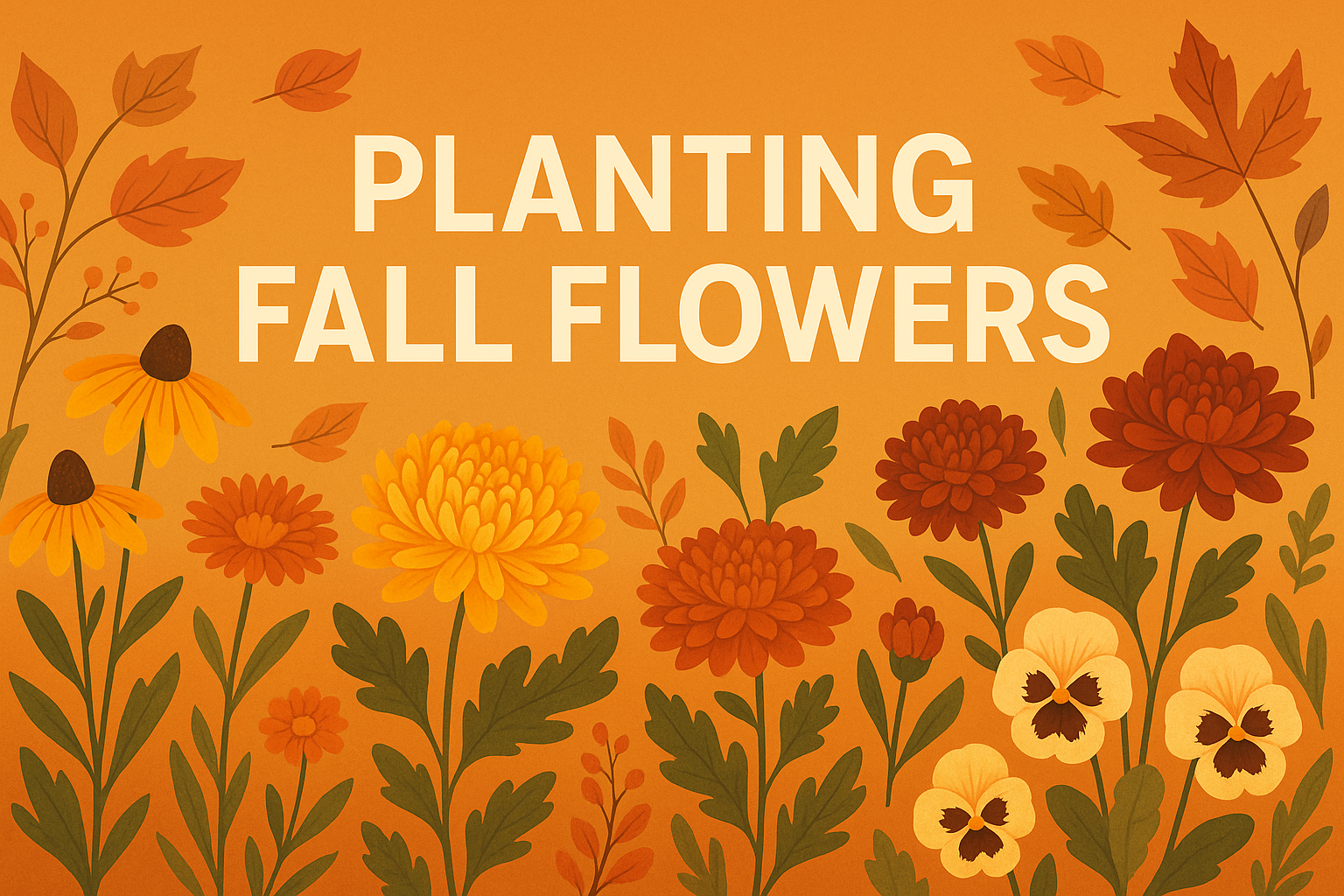
🌿 Why Fall Is the Best Time to Plant in Charleston, SC When most people think about planting, they picture sunny spring days and colorful blooms. But here in the Lowcountry, the best time to plant is actually fall—and smart homeowners take advantage of it. At HLG Growers, we’ve been designing and installing Charleston landscapes for years, and we can tell you firsthand: planting in the fall sets you up for long-term success. Whether you're dreaming of fresh flower beds, shade trees, privacy hedges, or pollinator plants, autumn is your window of opportunity. 🍂 1. Cooler Temperatures = Happier Plants Charleston summers are hot, humid, and intense—not ideal for young root systems. But when fall rolls around, daytime highs drop, and your plants experience less stress from heat and sun. This gives them time to settle in without battling scorching temps, making fall a gentler, more forgiving planting season. 🌱 2. Roots Grow Even While Plants “Sleep” Above ground, things may look dormant—but underground, roots are actively growing. The soil in Charleston stays warm well into late fall and early winter, which means your trees, shrubs, and perennials can establish deep roots before the spring growing season hits. 🌳 That head start = stronger plants, better blooms, and less watering later. 🌧️ 3. Nature Does the Watering In fall, rainfall is typically more reliable—and the cooler temps reduce evaporation. That means you’ll spend less time watering, and new plants get a more consistent supply of moisture to help them establish. 🐝 4. Better for Pollinators and Wildlife Planting native trees, shrubs, and flowering perennials in the fall supports Charleston’s birds, bees, and butterflies right when they need it most—before migration or dormancy. Plus, you’ll be all set for a pollinator-friendly garden as soon as spring returns. 🧱 5. Ideal Timing for Landscape + Hardscape Projects If you're planning landscape design, bed installations, or even hardscape upgrades (like patios, pathways, or fire features), fall is the perfect time to tackle those projects. Why? - Install crews are often more available than in the spring rush - Sod and mulch hold better in cooler temps - You’ll enjoy your space longer before summer heat returns - It avoids spring rains that can delay projects 🌺 What to Plant in Charleston in the Fall? Fall is ideal for: - Trees (live oak, crape myrtle, magnolia, red maple) - Shrubs (azaleas, camellias, yaupon holly, viburnum) - Ornamental grasses (pink muhly, fountain grass) - Perennials (salvia, echinacea, coreopsis) - Ground covers and native wildflowers - Seasonal annuals (mums, pansies, ornamental kale) Want a custom planting plan? We’ll match the right plants to your sunlight, soil, and style. 📞 Ready to Plant? Let’s Design Something Beautiful. If you’ve been thinking about redoing your beds, adding privacy plants, or creating a brand-new landscape layout, don’t wait for spring. Fall is the smart season to start. At HLG Growers, we’ll help you design, prep, and install a space that looks great now—and thrives long into the future. 📆 Let’s get you on the fall planting schedule. Contact us today for a consultation.
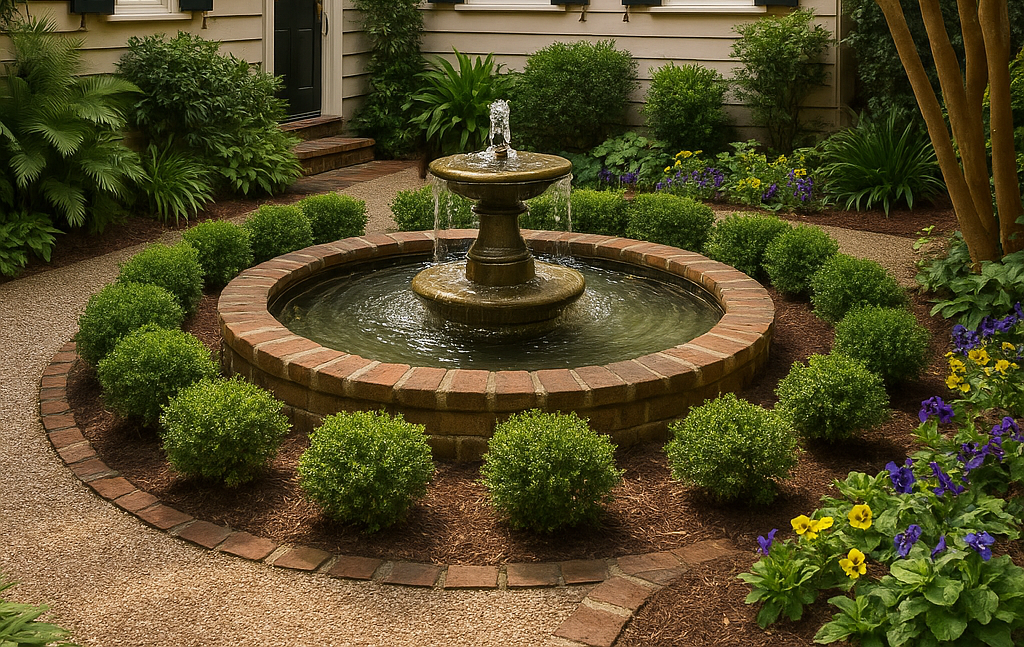
🌿 1. Instant Relaxation and Stress Relief There’s a reason spas, meditation gardens, and resorts use water features—they promote calm, focus, and emotional balance. The gentle sound of moving water reduces stress and creates a sense of tranquility that helps you unwind after a long day. Did you know? Studies show that the sound of flowing water can help lower blood pressure and improve sleep quality. 🐝 2. Supports Wildlife and Pollinators Water features don’t just enhance the look of your backyard—they become a vital resource for birds, butterflies, bees, and other local wildlife. A small pond or fountain offers fresh water for drinking and bathing, helping you create a mini ecosystem right at home. This is especially important in Charleston, where native species thrive in thoughtfully designed outdoor spaces. 🏡 3. Boosts Property Value and Curb Appeal Just like a fire pit or pergola, a water feature is a landscape investment. A well-placed fountain, birdbath, or pond adds curb appeal and can make your property more attractive to future buyers. At HLG Growers, we custom-design each water feature to blend with your home’s aesthetic—whether you're going coastal, modern, rustic, or traditional. 🧼 4. Lower Maintenance Options Are Available Worried about upkeep? Don’t be. Modern water features can be designed to be surprisingly low maintenance, with pumps, filters, and automatic refilling systems. We help you choose the right scale and design so you get all the beauty without the headache. Options include: - Recirculating fountains - Pondless waterfalls - Bubbling urns - Self-contained rock towers 🔊 5. Sound Barrier for Street or Neighbor Noise If you live near a busy road or close to neighbors, a water feature can act as a natural sound buffer. The sound of flowing water helps muffle unwanted noise and creates a more private, serene environment. This makes it a popular choice for Charleston homes with smaller yards or urban locations. 🔥 6. Pairs Beautifully with Fire Features Want to create a truly dynamic outdoor space? Water + fire = magic. We often design landscapes where water features sit near a fire pit or outdoor fireplace. The contrast between cool water and warm fire draws people in and makes your space usable in every season. 🌞 7. Encourages Outdoor Living When you create an inviting environment, you’re more likely to use it. A water feature makes your backyard feel like a retreat—perfect for morning coffee, family dinners, or quiet evenings under the stars. We can even add lighting, seating areas, and stepping stones to make it functional and beautiful, day or night. 💬 Final Thoughts: Let’s Make It Flow A backyard water feature isn’t just a pretty upgrade—it’s a lifestyle enhancer. At HLG Growers, we design, build, and install custom water features across Charleston, Summerville, Mt. Pleasant, and the surrounding areas. Whether you’re dreaming of a peaceful pond, a contemporary fountain, or a playful bubbler for the grandkids, we’ll help you bring it to life—with native plants, natural stone, lighting, and landscape integration. 📞 Ready to transform your outdoor space? Let’s start planning your custom water feature today.
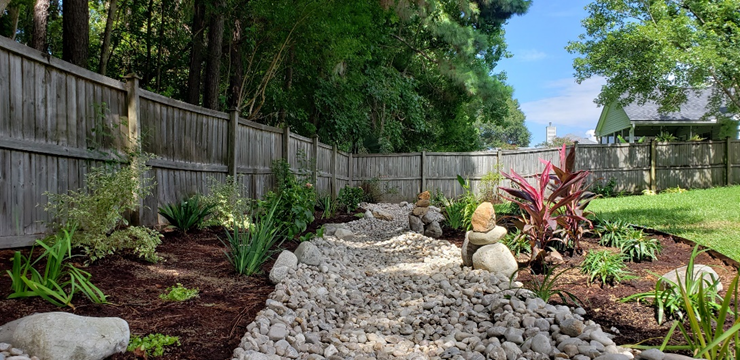
Living in the Lowcountry has its perks—beautiful marsh views, warm weather, and coastal charm. But it also comes with a unique challenge that many Charleston-area homeowners face: drainage problems. Between high water tables, clay-heavy soil, hurricanes, and seasonal downpours, improper drainage can wreak havoc on your lawn, foundation, landscaping, and outdoor living spaces. At HLG Growers, we’ve helped dozens of clients tackle drainage issues head-on—and we’re here to help you understand what’s going on under your feet.
